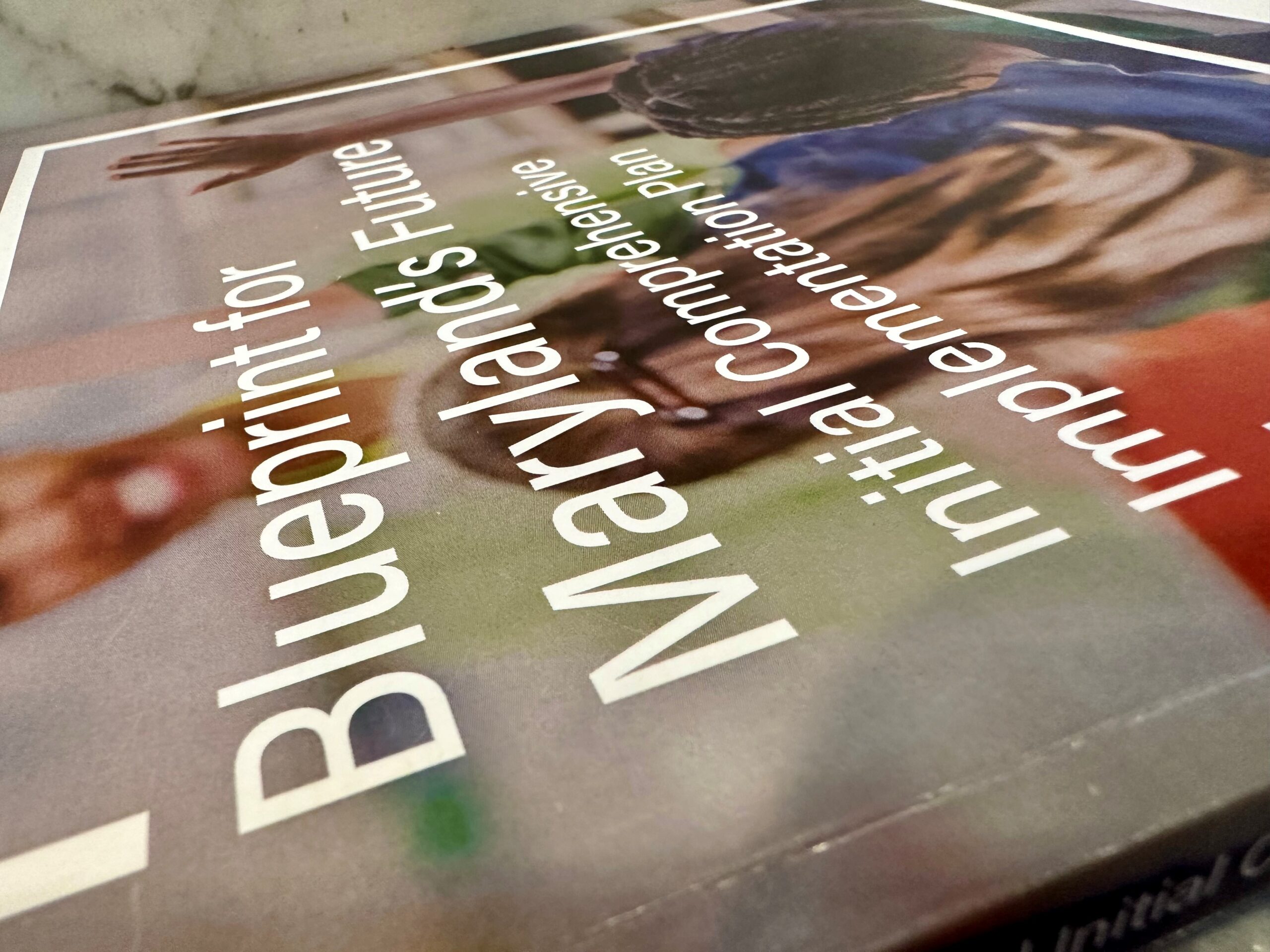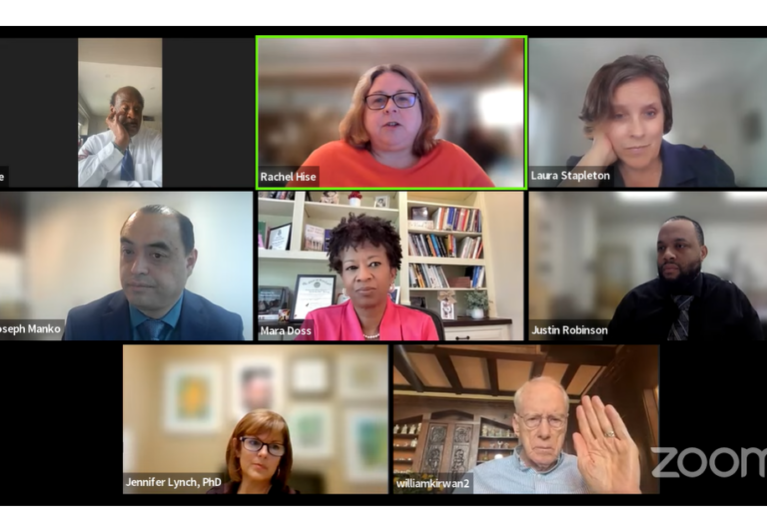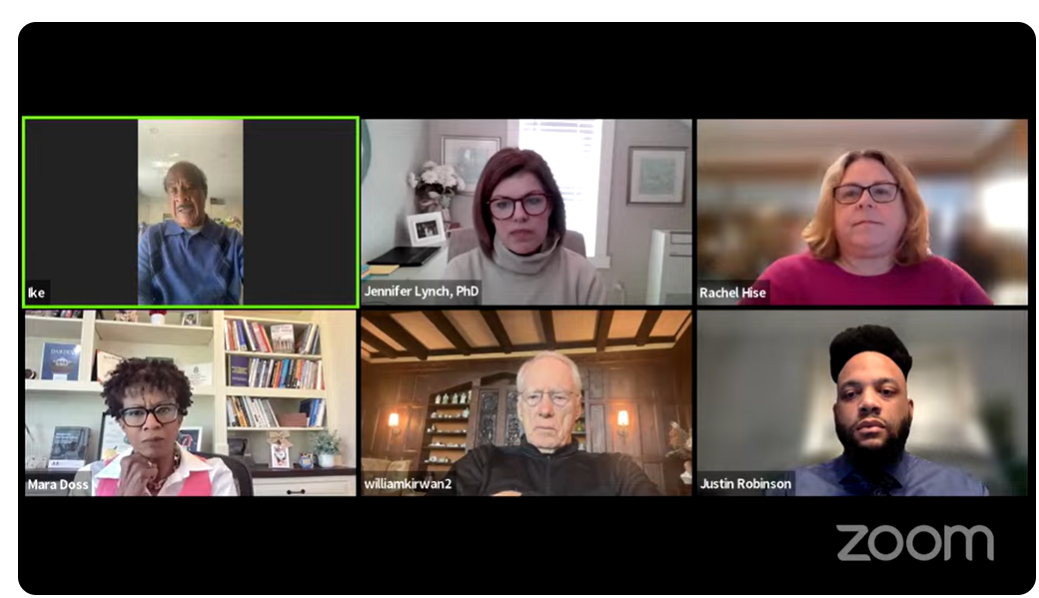Blueprint board adopts multibillion-dollar education plan, sends it to lawmakers

A $3.8 billion education plan was adopted unanimously Thursday, but there’s still more work ahead for the board that approved it to ensure that school officials implement it.
The Blueprint for Maryland’s Future Accountability and Implementation Board (AIB), established by state law to administer the 10-year plan, will send a 185-page document to the governor, General Assembly and all 24 school systems.
“This is the initial plan and there’s more we need to do on it,” William “Brit” Kirwan, vice chair of the board and former chancellor of the University System of Maryland, said after a more than four-hour virtual meeting.
Fagan Harris, a board member who will become chief of staff for Gov.-elect Wes Moore (D), did not attend the virtual session.
One change adopted Thursday focused on a goal for “all” Maryland students to become successful. Some educators, parents and advocates had expressed frustration with the phrase “nearly all” in the previous draft.
Other changes include the following directives for local school districts:
- Create partnerships with Head Start programs and the state’s four historically Black colleges and universities and other minority-serving institutions.
- Implement a 9th grade student progress monitoring system.
- Ensure that professional development for teachers will be aligned with evidence-based research and will promote cultural competency and social emotional learning, as appropriate.
- Allow Blueprint money to be used for arts education and non-college and career readiness programs.
Now local school officials, with assistance from the Blueprint board and state Department of Education and other state and local agencies, must begin making decisons on how to implement the plan.
Guidelines, issued by the board on how each school system must implement the plan, emphasize four priorities: improve early childhood education, hire and retain high-quality and diverse teachers, make sure students are prepared for college and technical careers and offer more resources for students in need.
Although local school systems either have begun to assign or have already assigned staff as local Blueprint coordinators, the Blueprint board will provide technical assistance throughout the process.
The board gave school officials three deadlines for submitting their Blueprint plans.
The first deadline, March 15, 2023, requires each school system to submit plans through the 2023-24 school year. Among details to be included in plans are that school officials must explain how incoming kindergarteners will be evaluated and that they must prepare annual reports on the diversity of their teacher workforce and periodically provide a report if a student needs academic intervention to ensure that student graduates on time.
The state Department of Education will review each plan and offer recommendations to the Blueprint board for approval by June.
In March 2024, school officials must submit a second set of Blueprint plans that will incorporate the four priorities through the 2026-27 school year.
A third submission would be due in 2027 to cover the school years between 2027-28 and 2031-32.
State legislation requires that the Blueprint board, which will remain operative until fiscal year 2032, can approve any changes to the overall plan every year by Aug. 1.
Slightly more than a week before the board approved the plan Thursday, it received almost 445 written comments from students, parents, advocates and education officials with questions and suggestions on how to improve it.
Laura Stapleton, a Blueprint board member who chairs the Human Development and Quantitative Methodology Department at the University of Maryland, College Park, gave “a shout out” to students from Thomas W. Pyle Middle School in Bethesda, Montgomery County. Several students posted comments on the Blueprint board website requesting that arts education doesn’t get reduced or eliminated.
Nancy Shapiro, associate vice chancellor for education and outreach for the University of Maryland System, recommended that some money allocated for an annual $250,000 marketing campaign to attract high-quality and diverse teachers gets allocated to universities “since students looking to become teachers are at or applying to universities…” According to the plan, the money would be managed by the state Department of Education.
What missed the cut?
Several people requested the board make major changes in the document, but Rachel Hise, the board’s executive director, said that is not in the board’s purview.
Some educators and advocates requested the $60,000 annual minimum salary for teachers should be increased to match inflation. Hise said that would require a change in the Blueprint legislation, which can only be done by state lawmakers.
Although the board will ensure arts education receives funding, some arts educators asked if that subject could be incorporated into the college and career readiness curriculum. Hise said that would also have to be approved by legislators.
Other suggestions not incorporated in the plan, Hise said, aren’t within the scope of the Blueprint plan, such as the use of school resource officers, prioritizing civics education and delivery of transition services for teenagers with disabilities.
“The purpose of the comprehensive implementation plan is really to identify…the what versus the how. The AIB’s primary focus is on the what,” Hise said. “The Blueprint comprehensive plan is not intended to specify every single thing that happened to require every single thing. That’s why we have local flexibility, local control and a state Department of Education that are our state’s education experts.”
Kalman Hettleman listened to Thursday’s virtual session and wasn’t pleased with what he heard.
Hettleman, a member of the committee that the developed the Blueprint), said in an email that the board “seems to have inappropriately determined special education instruction” is beyond the scope of the plan. He also said the plan doesn’t lay out realistic expectations for how any students will achieve at a high level.
“What’s especially ominous is that the AIB seems to be almost wholly relying on local control which has been a failure in the past and will continue to fail without strong regulation and support on the use of evidence-based best practices,” he wrote.
Jennifer Lynch, director of educational partnership for Baltimore County and a member of the AIB, summarized what the board isn’t looking to do.
“We aren’t limiting opportunities for students,” she said.
A completed document may be available online next week and printed copies next month.
The Blueprint board plans to hold its next virtual meeting Dec. 15.




 Creative Commons Attribution
Creative Commons Attribution